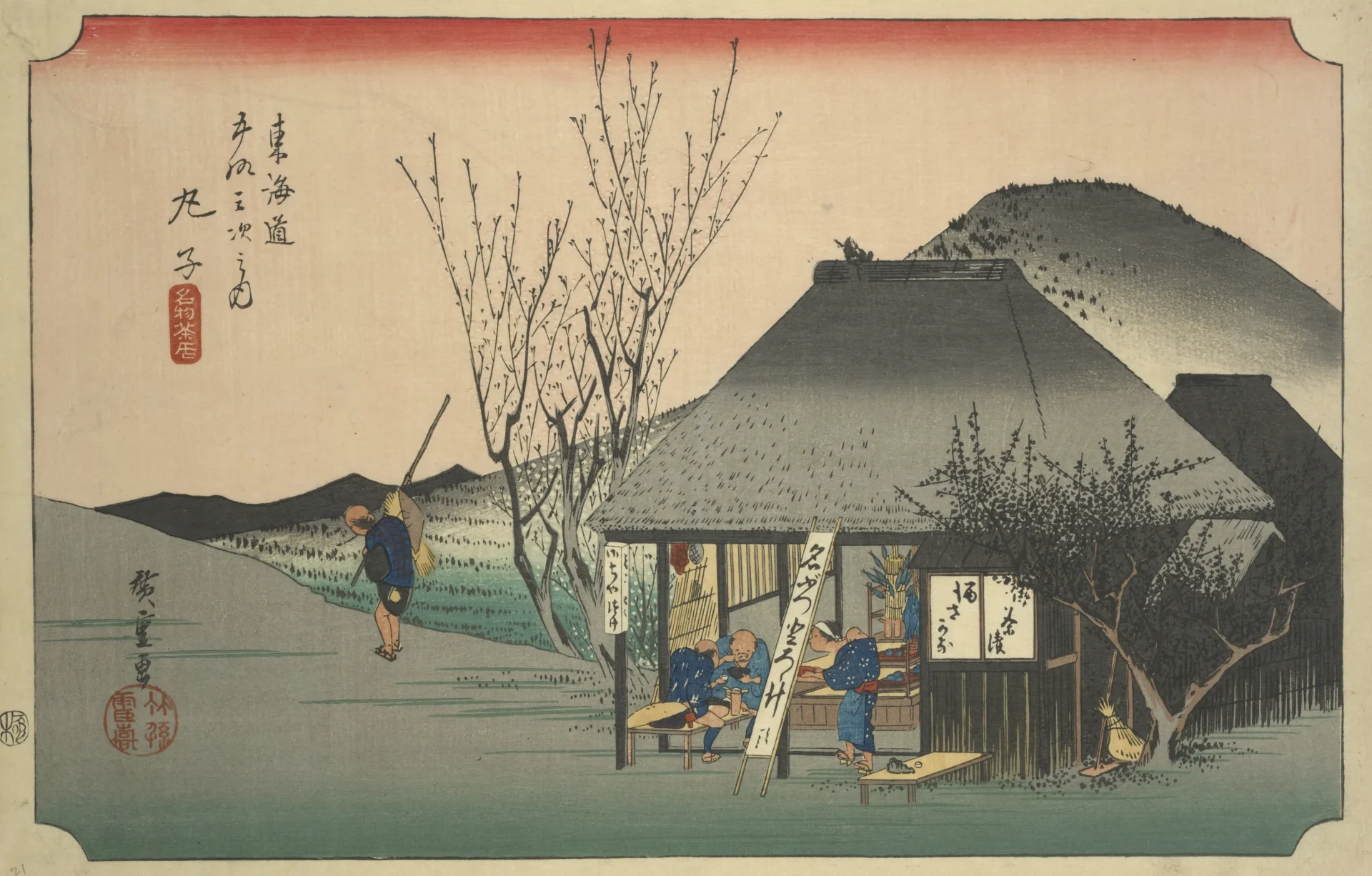This article was created using a translator. There may be expressions that are difficult to understand. If you have any questions, please check by yourself.
Please consult us about anything related to Fujieda City.
CONTACTHello! This time, we took a stroll around Mariko-juku in Suruga Ward, Shizuoka City.
The Tokaido Fifty-Three Stations are famous for their appearance in Utagawa Hiroshige’s ukiyo-e prints. Among them, Mariko-juku is a post town known for its famous tororo-jiru (grated yam soup). Walking around the town, I enjoyed not only its historical atmosphere but also its many tourist attractions. This time, I will introduce a tour that starts from Abe River Station and takes you around Mariko-juku, where you can experience historical sites, gourmet food, and even craft experiences at Takumi-juku!
What’s Mariko-juku?
Mariko-juku is the 21st post town along the Tokaido Road, counting from Edo. It is close to the castle town of Sunpu and has been a place where many travelers have passed through since ancient times. It is depicted in Hiroshige’s ukiyo-e print “Tokaido Gojusan-tsugi: Maruko,” and the teahouse shown in the print is the very one that served tororo soup. In other words, this famous dish that has been satisfying travelers’ stomachs for over 200 years still remains today.
Although the post station was not particularly large in scale, it was bustling with daimyo processions and travelers due to its proximity to Suruga, with honjin (main inns), wakihonjin (subordinate inns), and ryokan (inns) lining the road. While many areas are now residential neighborhoods or roads, following the stone monuments and information boards allows one to truly feel that “this was once a post station.”
Famous for its grated yam soup, the long-established restaurant “Choujiya”
When it comes to Mariko-juku, it’s gotta be “tororo-jiru” (grated yam soup). The most famous place for this is “Chojiya.” It’s been around since 1596, so it’s got over 400 years of history. The teahouse depicted in Hiroshige’s ukiyo-e prints is said to be the prototype for Chojiya.
It’s got a certain romantic feel to it, doesn’t it?
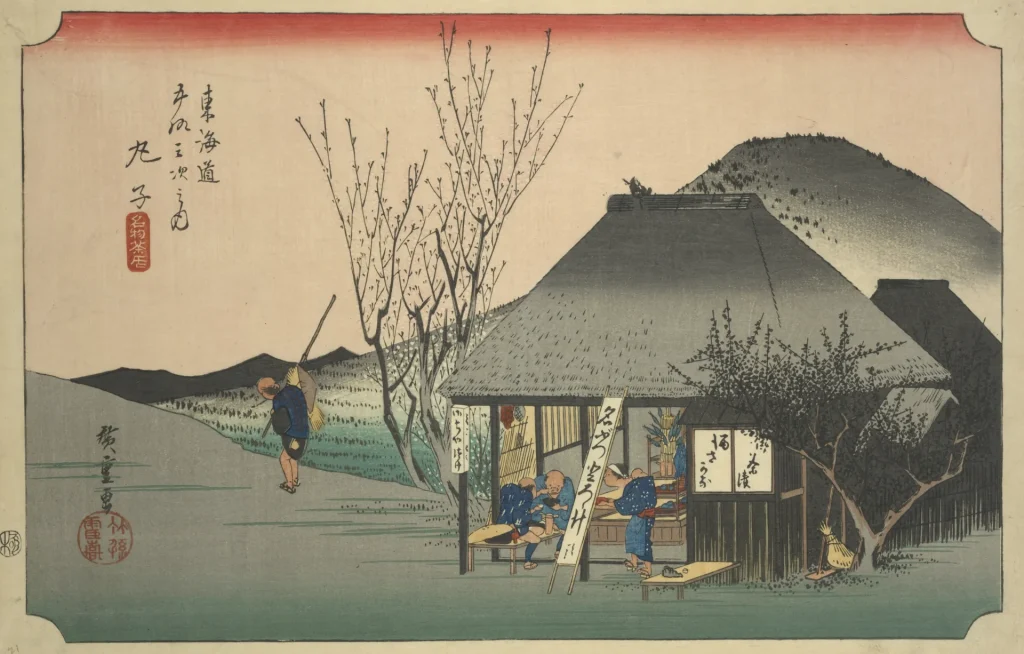
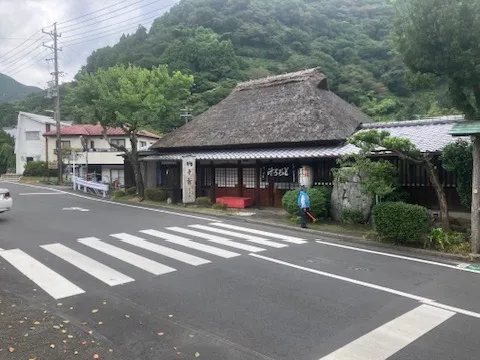
When you enter the restaurant, you will find yourself in a traditional building with a wonderful atmosphere.

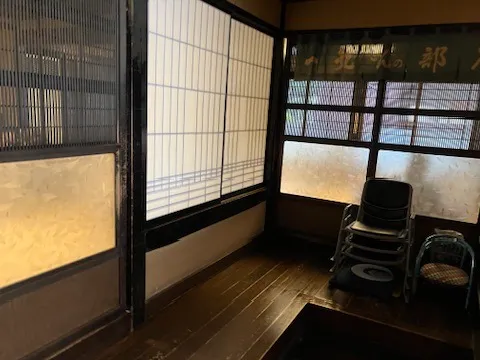
The specialty dish is, of course, the “tororo-jiru set meal.” Grated yam is carefully ground in a mortar and mixed with broth, then poured over rice. The sticky yam has a wonderful aroma and a fluffy texture when you put it in your mouth. You can eat as much rice as you want. There are also menus that come with pickles, simmered dishes, and small side dishes, so the nutritional balance is perfect. It’s touching to think that travelers in the Edo period must have filled their stomachs in this way.
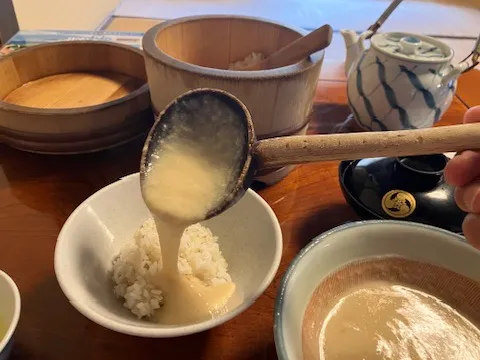
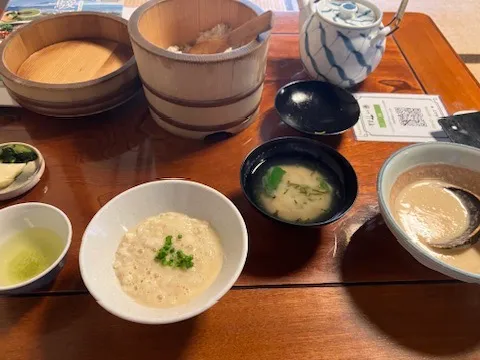
I had the “Mariko” menu for ¥1,760 (tax included).
I think it’s the simplest menu item.
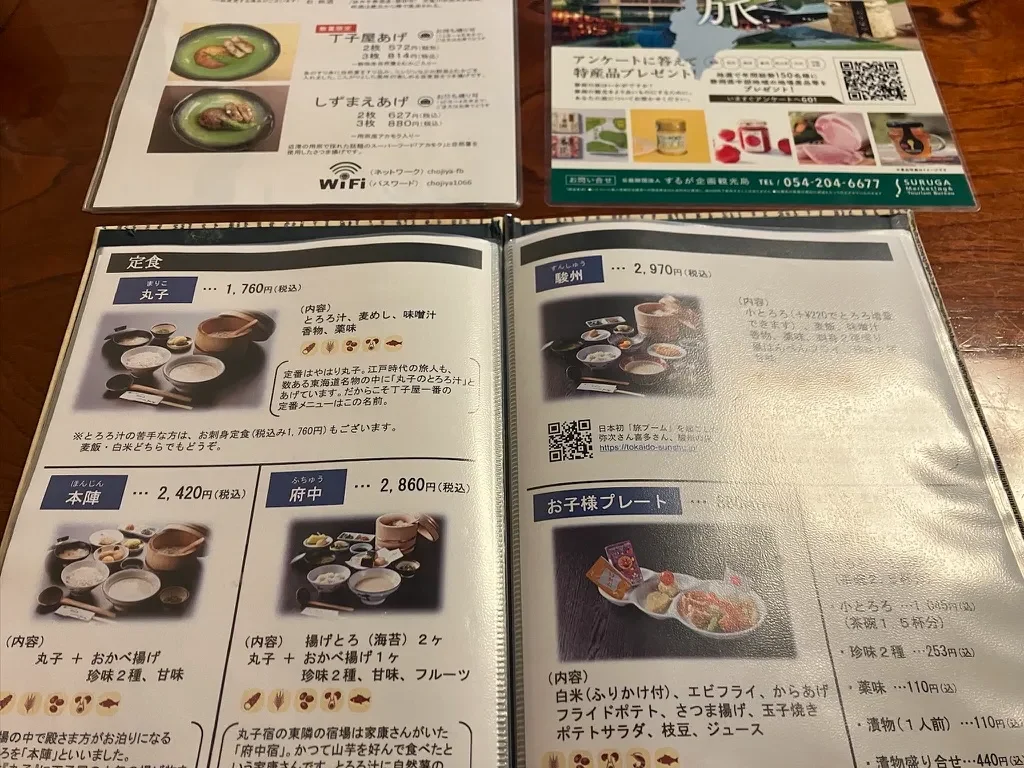
Furthermore, the building itself is a cultural property, with old beams and earthen walls remaining as they were at the time. It is truly a symbol of Mariko-juku, where you can feel the history while enjoying your meal.
There are also some small exhibits.
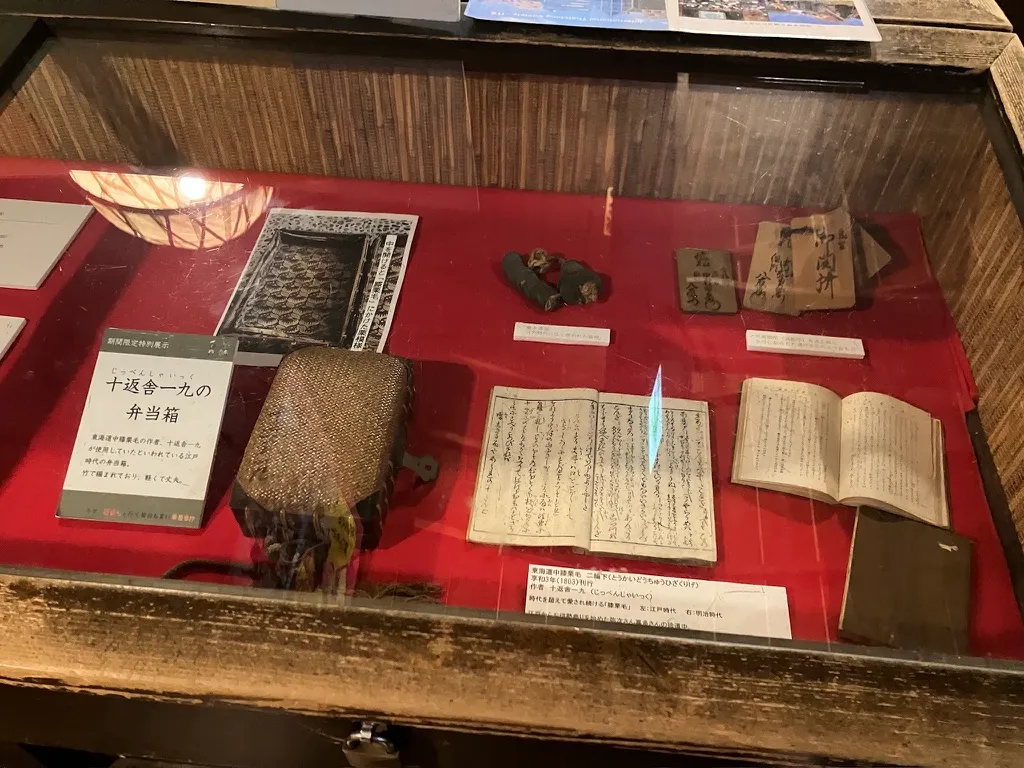
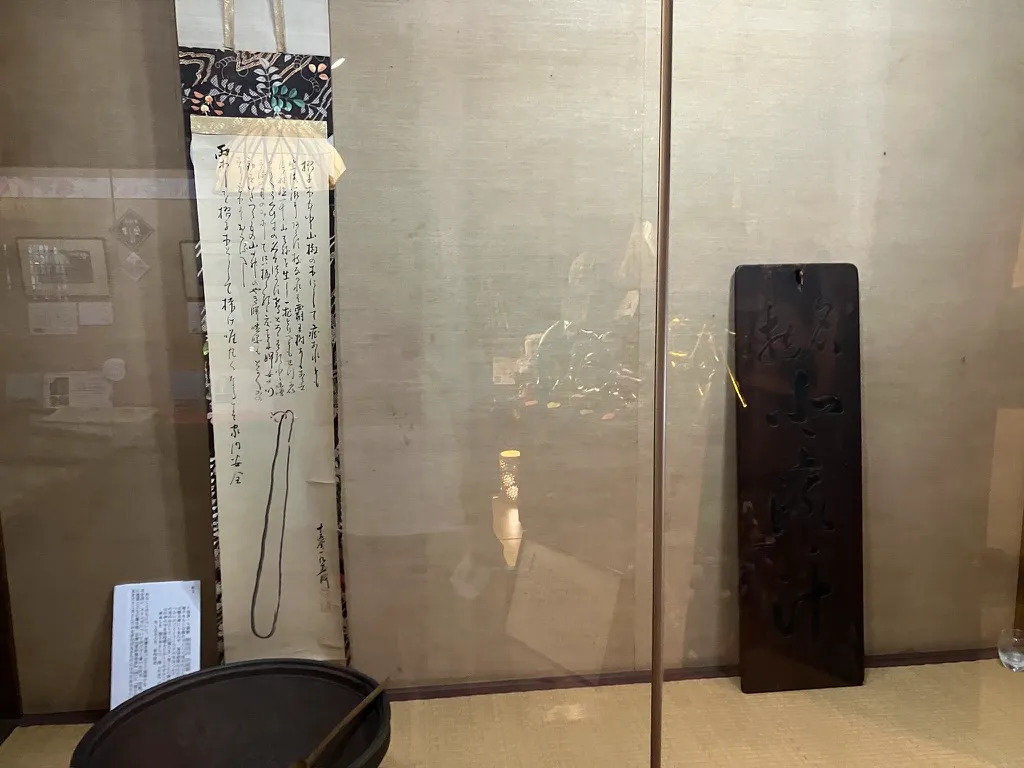
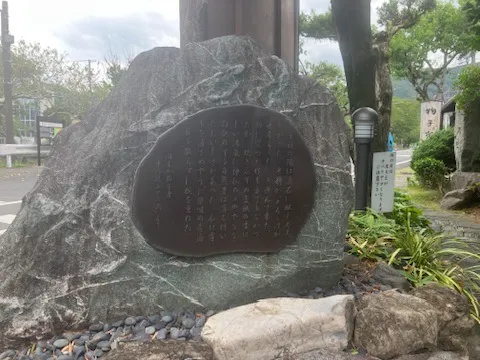
Monument to Kanoko Okamoto
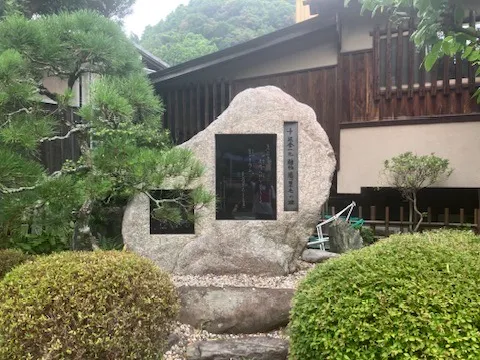
Monument to Jippensha Ikku’s “Tokaidochu Hizakurige”
Touring the historic sites of Mariko-juku
Mariko-juku is dotted with stone monuments and historical sites that retain the vestiges of its former life as a post town. This time, I walked from Abe River Station and visited several places of interest.
Mariko-juku Monument
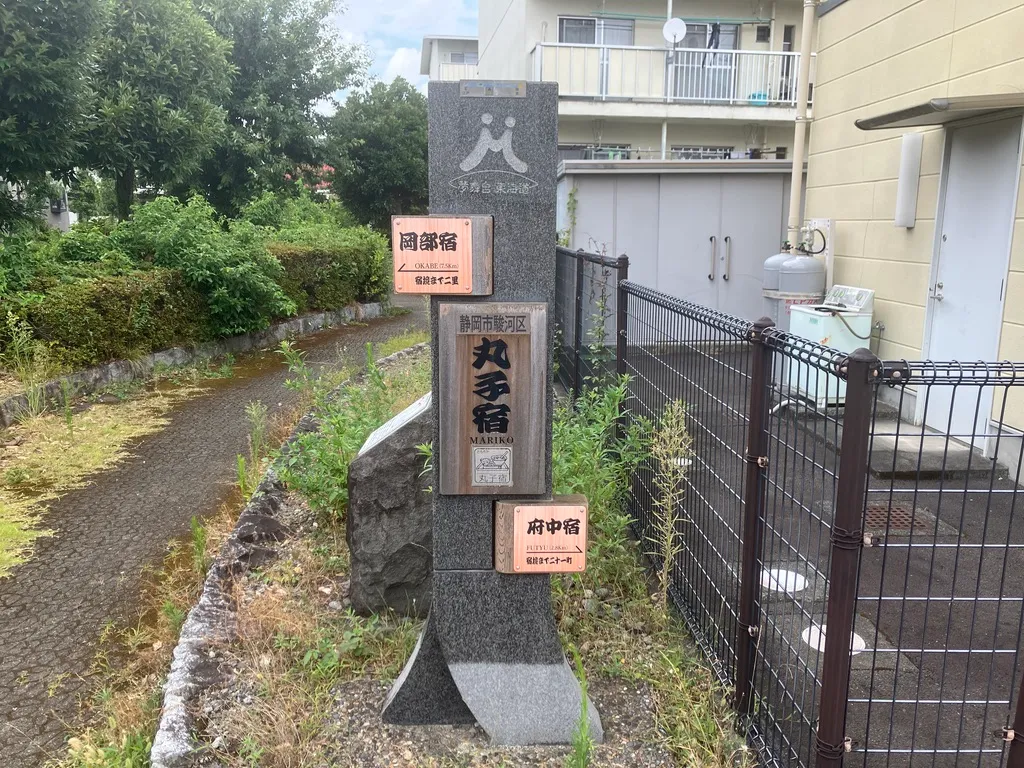
A stone monument indicating the location of a former post town. It stands quietly, but you can feel that “Mariko-juku was here.”
Mariko Ichirizuka Ruins
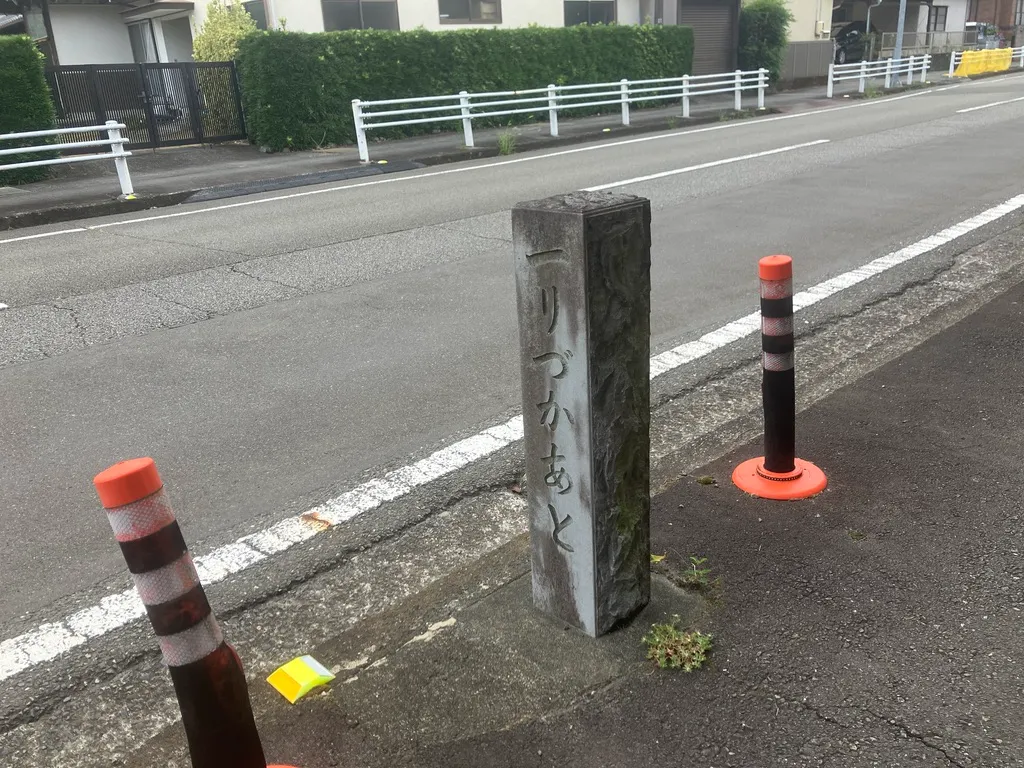
Signposts from the Edo period. Mounds were built every mile to help travelers measure distances. Nowadays, only the ruins remain, giving a sense of history.
Ichirizuka were mounds (earthworks) erected every 1 ri (approximately 3.927 kilometers) along major roads starting from Nihonbashi in Edo. Many of them had Japanese hackberry or pine trees planted on top, serving as landmarks for travelers passing by on the roads.
Signpost Maruko-juku Mifuke Ruins
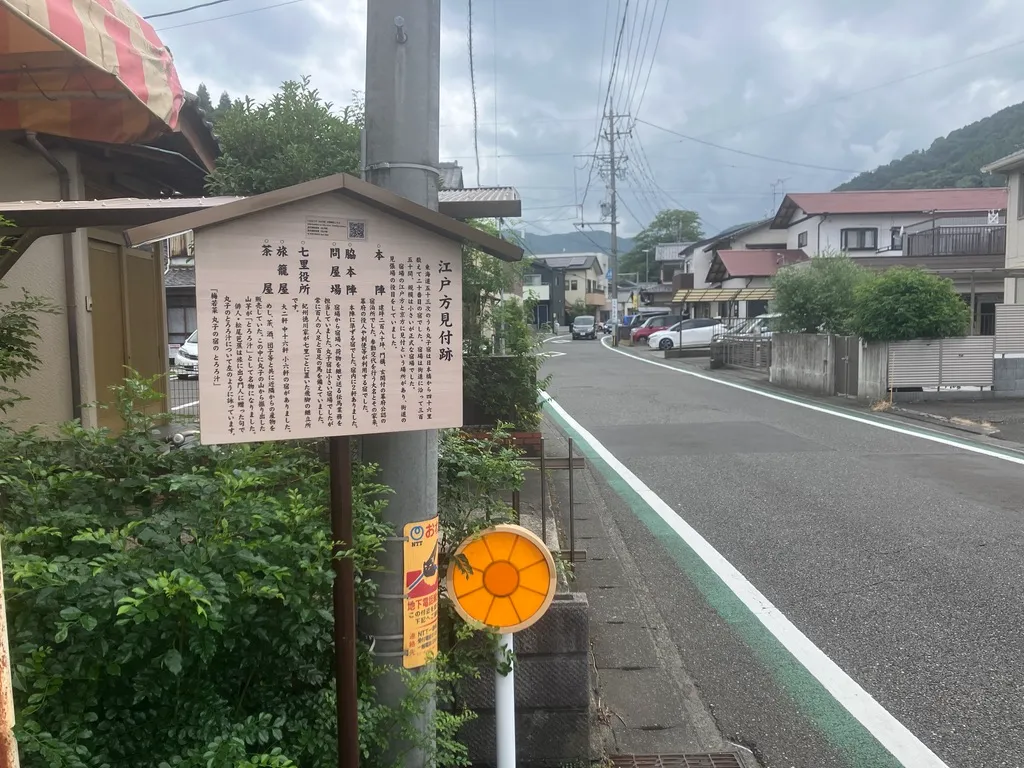
This is the entrance to the post town. Travelers passed through here to enter Maruko-juku.
Mariko Shukusha

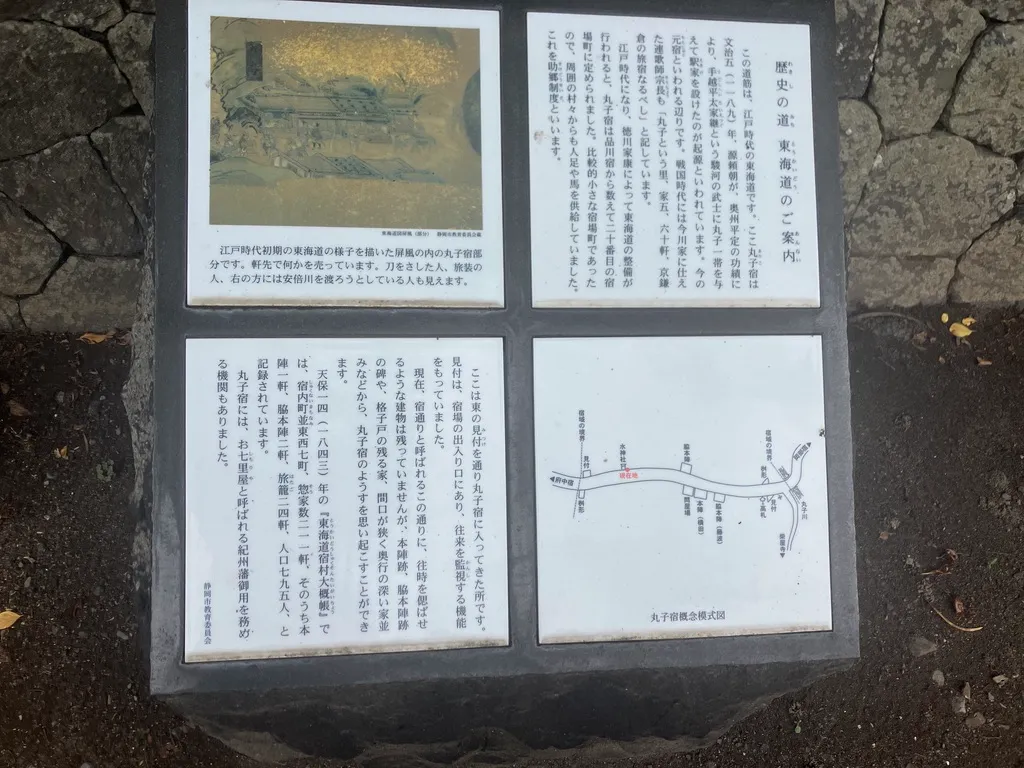
This area is located at the southern end of the post town. It is now a residential area, but it is said that there used to be many inns and shops here.
Mariko-juku Yokota Honjin Ruins
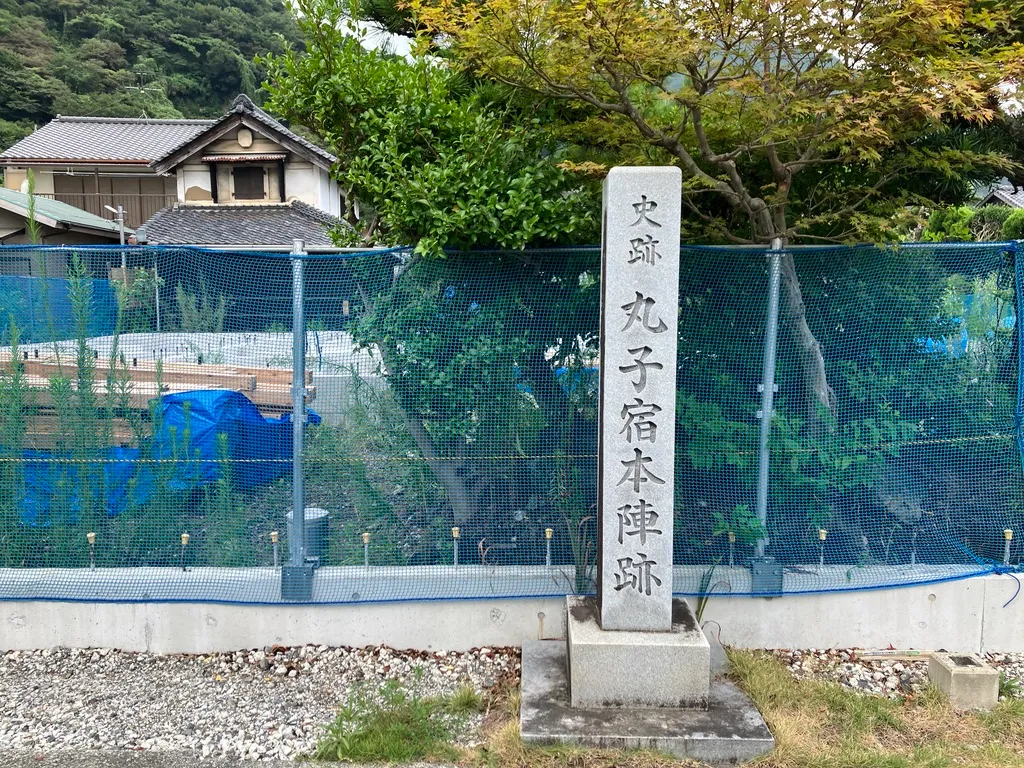
The site of the honjin where feudal lords and dignitaries stayed. Although the building no longer remains, an information board conveys the atmosphere of the time.
Meiji Emperor’s Resting Place
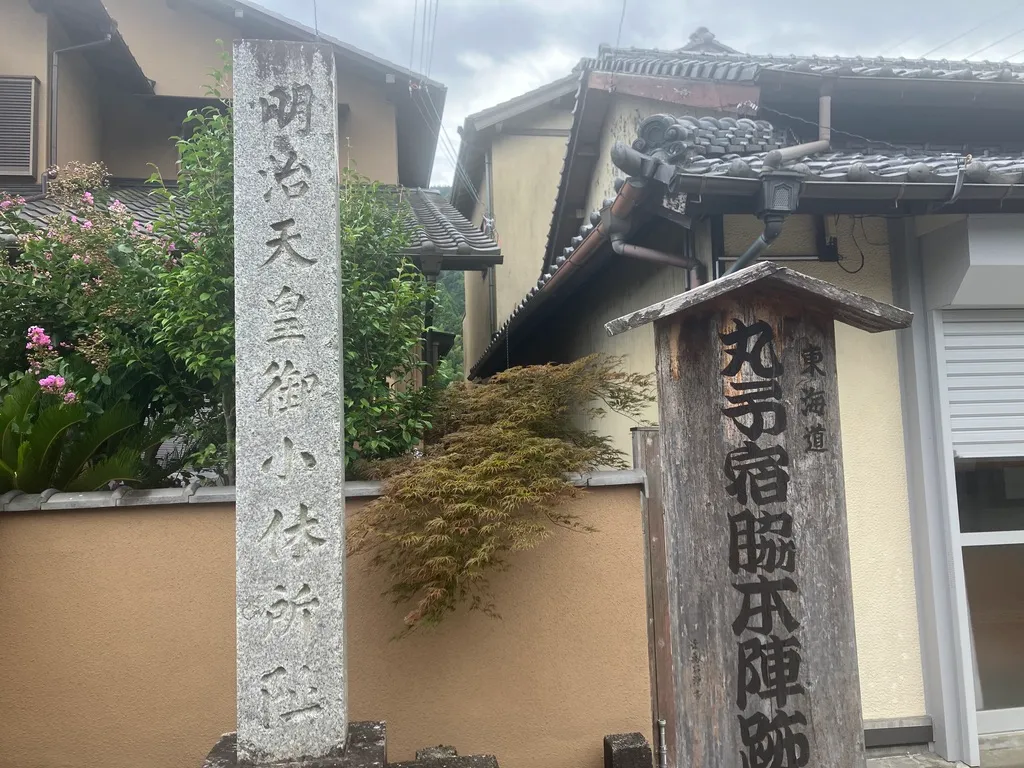
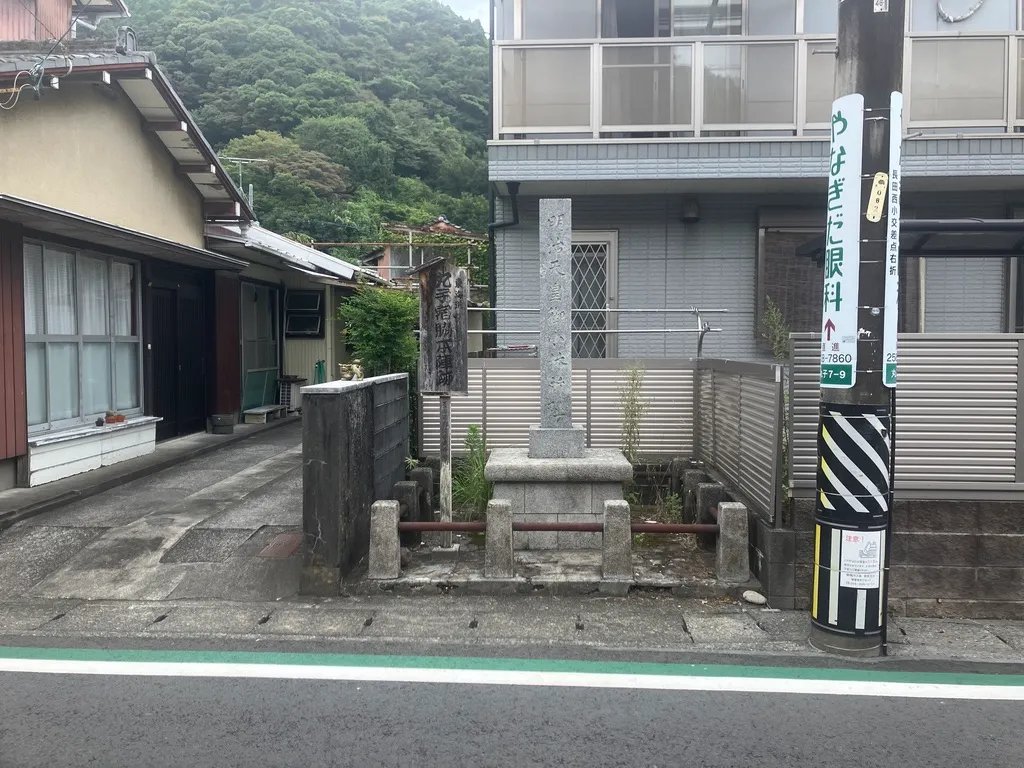
This is a rest stop where Emperor Meiji stopped during his tour. It is a spot where you can feel the dignity of Maruko-juku. There are two locations in Maruko-juku: the Yokota family site and the Fujinami family site.
Enjoy traditional crafts at Takumi-Yado!
Although it is slightly outside the Mariko-juku area, I highly recommend visiting Sunpu Takumi-juku. This is one of Japan’s largest traditional craft experience facilities, where you can experience crafts unique to Shizuoka.
I visited here with a casual attitude, thinking, “Should I just stop by on my way?”
The result… I highly recommend it! I recommend it even more than Mariko-juku!
…No, Mariko-juku is also great, but Takumi-juku is definitely worth visiting at least once. You’ll truly appreciate the beauty of handmade crafts!
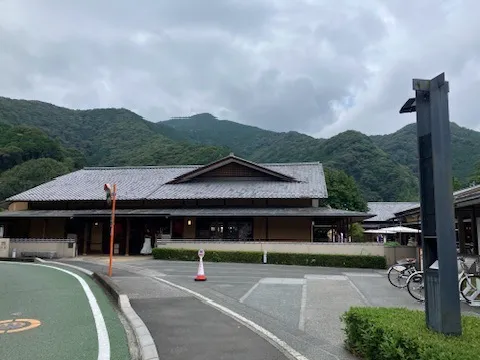
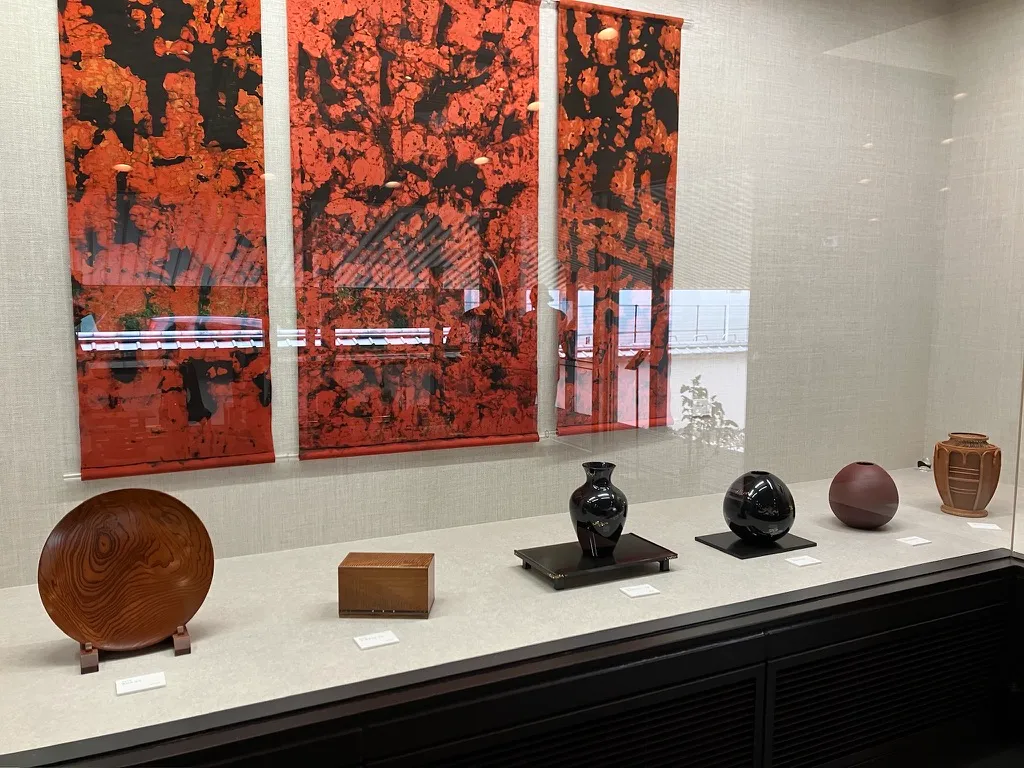
You can try your hand at a variety of crafts, including lacquerware, pottery, dyeing, and bamboo crafts. With guidance from skilled artisans, you can create your own unique piece, making it the perfect souvenir of your trip. The courtyard is also landscaped as a garden, offering enjoyment for both children and adults, making it ideal for families.

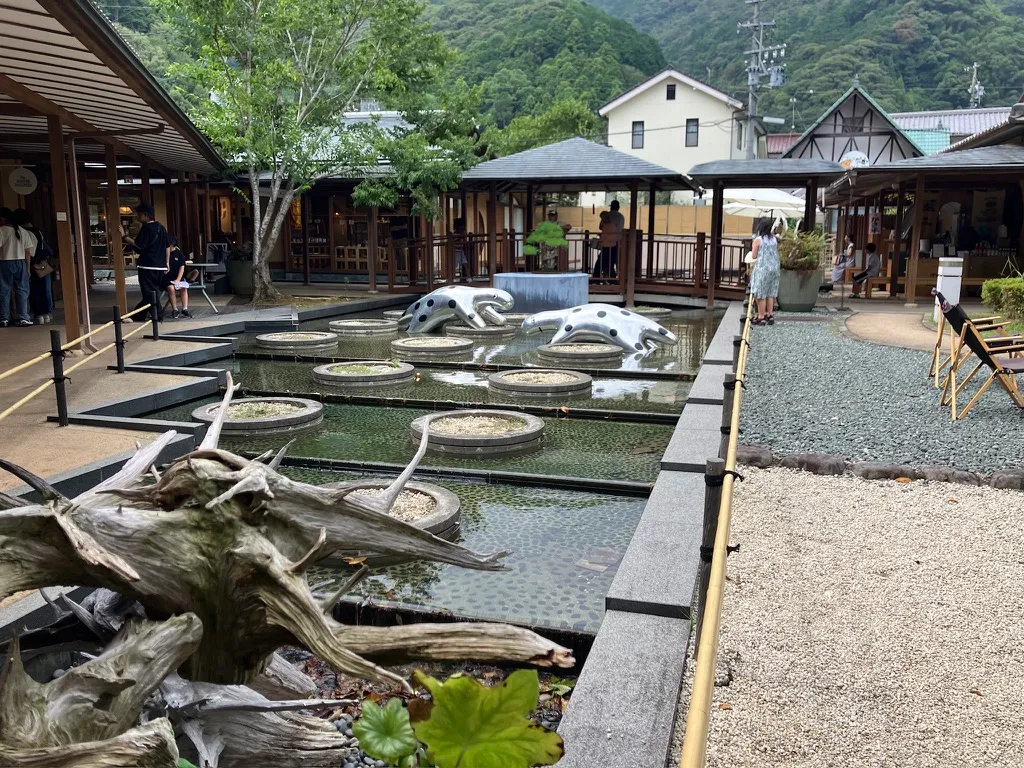
There is also a corner inside the museum where you can see and purchase the crafts on display, allowing you to see the craftsmen’s skills up close. These crafts make for unique souvenirs from Shizuoka, and this is the only place where you can purchase traditional crafts that become more enjoyable the more you use them.
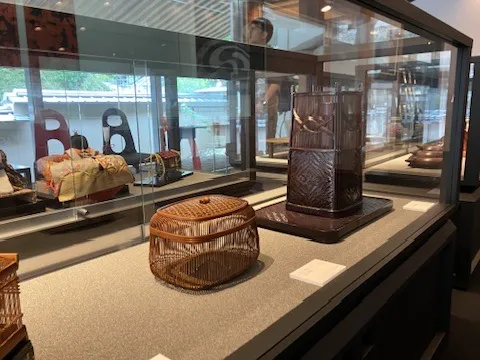

There are also restaurants and cafes, so it’s a good place to take a break after trying your hand at crafts. After walking around Maruko-juku, you can enjoy a full day of activities here.
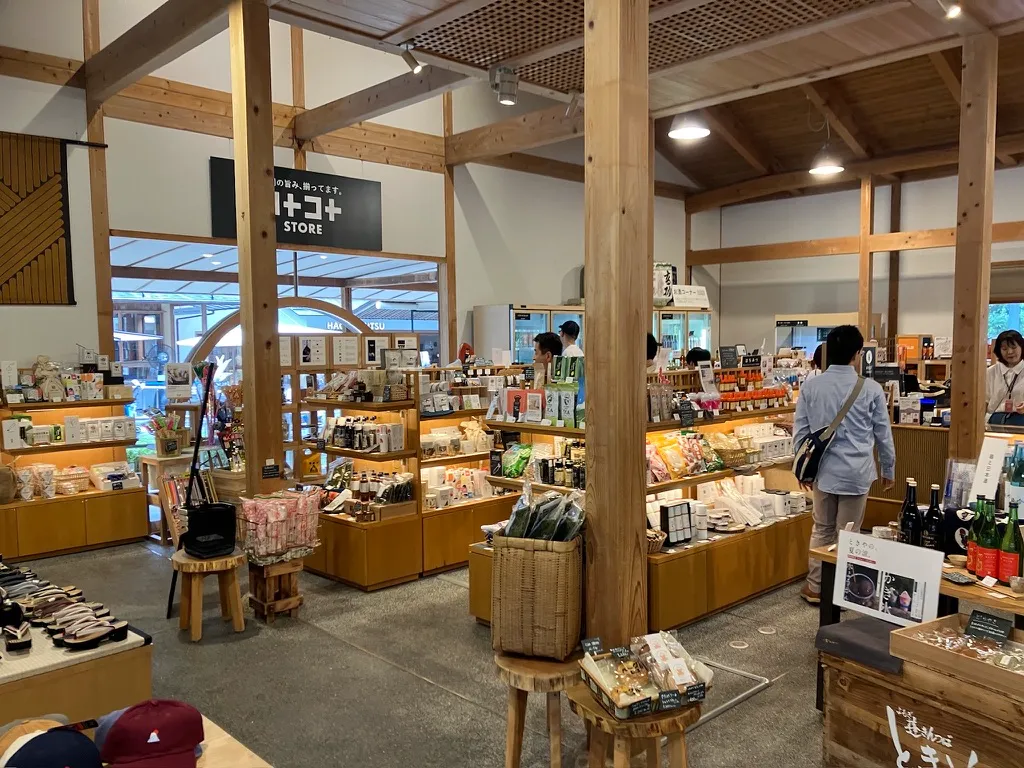
Summary
Mariko-juku is not only a place where you can experience the history of the Tokaido Road, but also a spot where you can enjoy modern-day attractions such as the grated yam soup at Chojaya and the craftworks at Takumi-juku. The stone monuments and ruins of the post town may seem unassuming, but they are interesting in that they connect the pieces of history.
With easy access from Shizuoka City, it is recommended not only for history buffs but also for those who want to enjoy sightseeing and dining. Why not stop by Maruko-juku and experience the atmosphere of a traveler in the Edo period?


